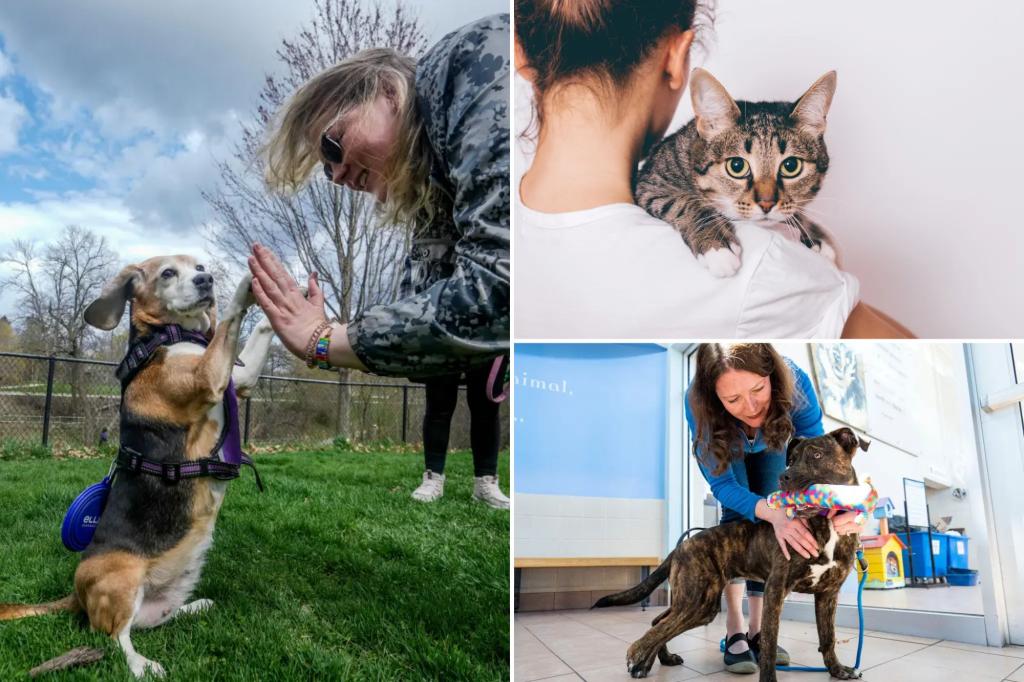America is facing a shortage of veterinarians, with a recent study showing that by 2030 there could be 15,000 fewer vets than needed to care for pets nationwide. This shortage is leading to longer wait times for appointments for both general and urgent care needs for pets. In many cases, emergency rooms are even turning people away due to the lack of available veterinarians on staff, exacerbating the issue. Forty-seven states in the US are currently experiencing some sort of veterinarian shortage, with the high cost of vet school contributing to the problem. Many new vets graduate with significant student loan debt, prompting them to seek more lucrative job opportunities in cities rather than working at municipal shelters or nonprofits.
Dr. Christina Sisk, the director of veterinary services at the Humane Society of Ventura County in California, was the only vet at her location for several years until last autumn. Due to the growing need for veterinary care, the Humane Society’s board of directors decided to hire another vet to help address the shortage. The shelter has also taken proactive measures to increase access to veterinary care by sending workers into the community to offer low-cost vaccinations to animals in need. Issues of access to veterinary care go beyond just financial barriers, as geography can also play a role in the availability of services. The Humane Society is working to educate the community on the importance of spaying and neutering pets to help reduce the demand for vet services.
The shortage of veterinarians is a pressing issue that is impacting pet owners across the country. With wait times for appointments increasing and emergency rooms turning people away, the need for more vets is crucial. The high cost of vet school is a significant factor in the shortage, as new graduates often prioritize higher-paying job opportunities in urban areas over working at shelters or nonprofits. Efforts like those of the Humane Society of Ventura County to hire additional vets and provide low-cost vaccinations are important steps in addressing the shortage and increasing access to veterinary care.
The Humane Society is taking a community-based approach to addressing the shortage of veterinarians by involving the public in solutions. By educating pet owners on the importance of spaying and neutering, the demand for veterinary care can be reduced, helping to alleviate the strain on existing resources. The organization is also focusing on providing low-cost services to make veterinary care more accessible to all pet owners, regardless of their financial situation. By working together with the community, the Humane Society is leveraging the power of collective action to address the shortage in a meaningful way.
Geography plays a role in the availability of veterinary services, with some communities being further from larger populations and facing additional barriers to access. By strategically placing resources and services in areas with the greatest need, organizations like the Humane Society can help to address these disparities. Educating the public on the importance of spaying and neutering pets not only helps to control the pet population but also reduces the demand for veterinary care. Through a combination of proactive outreach, community engagement, and education, the Humane Society and other organizations are working to make veterinary care more accessible and address the shortage of veterinarians across the country.
In conclusion, the shortage of veterinarians in America is a critical issue that is impacting pets and pet owners nationwide. With wait times for appointments growing and emergency rooms unable to meet the demand, the need for more vets is urgent. The high cost of vet school is a contributing factor to the shortage, as new graduates often seek higher-paying job opportunities in urban areas. Efforts to increase access to veterinary care, such as those by the Humane Society of Ventura County, are essential in addressing the shortage and serving the needs of pets in the community. By engaging the public, providing low-cost services, and educating on the importance of spaying and neutering, organizations can work towards a solution that benefits both pets and pet owners.


